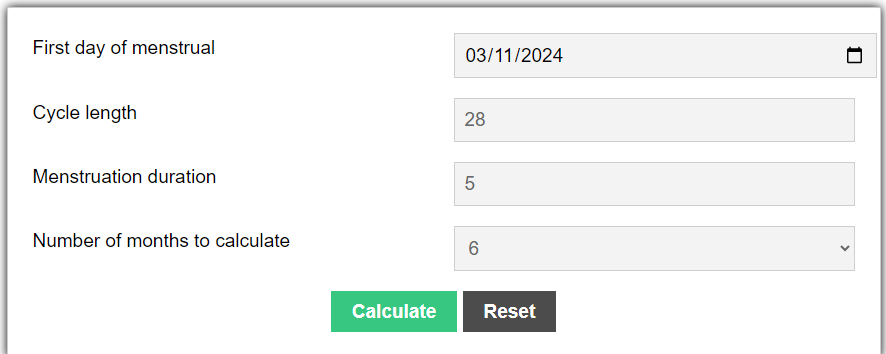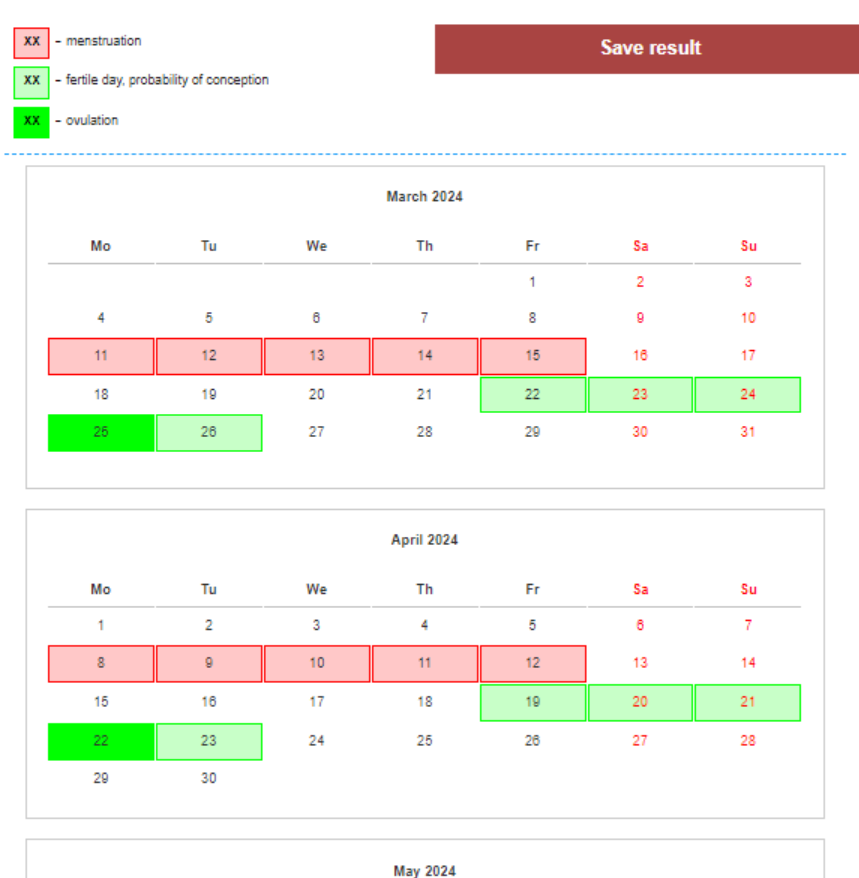For hopeful parents, pinpointing the fertile window is a crucial step in the remarkable journey of conception. Ovulation, the release of a mature egg from the ovary, creates a limited window each month when pregnancy is most likely. Understanding your fertile window empowers you to time intercourse strategically and maximize your chances of successful conception.
Scientific research has consistently demonstrated the value of accurate ovulation prediction. A key study published in the American Journal of Obstetrics and Gynecology found that couples who used ovulation predictor kits (OPKs) to time intercourse were more likely to conceive within three months compared to those who did not. Additionally, a comprehensive review published in the Cochrane Database of Systematic Reviews suggests that fertility awareness-based methods (FABMs), which often utilize ovulation prediction, can be just as effective as some forms of contraception when used correctly.
If you’re looking to conceive, using our ovulation calculator and fertility calendar can be beneficial. This tool helps you track your menstrual cycle and predict your most fertile days, increasing your chances of pregnancy.
What is an Ovulation Calculator?
An ovulation calculator is a tool designed to help individuals predict their fertile window by estimating the time of ovulation within a menstrual cycle. By inputting data such as the first day of the last menstrual period (LMP) and the average length of the menstrual cycle, the calculator provides an approximation of when ovulation is likely to occur.
Benefits of using an ovulation calculator:
- Fertility Planning: Ovulation calculators assist individuals and couples in identifying the most fertile days of the menstrual cycle, optimizing the chances of conception during planned pregnancies.
- Natural Family Planning: For those practicing natural family planning methods, ovulation calculators offer a non-invasive way to track ovulation and determine periods of fertility and infertility to aid in contraception.
- Time-Saving: Ovulation calculators provide quick and convenient access to ovulation predictions, saving individuals the effort of manually tracking menstrual cycles and ovulation dates.
- Increased Awareness: By visualizing their menstrual cycle and ovulation patterns, users gain a better understanding of their reproductive health, empowering them to make informed decisions regarding family planning and fertility treatments if needed.
- Reduced Stress: For individuals experiencing difficulties conceiving, ovulation calculators can alleviate some of the stress associated with uncertainty by providing insights into potential fertile windows and optimizing timing for conception attempts.
Overall, ovulation calculators serve as valuable tools for individuals and couples seeking to understand their fertility patterns, plan pregnancies, or prevent unwanted pregnancies through natural family planning methods.
A Simple Guide to Our Calculator
- Enter the First Day of Menstrual Cycle: Begin by selecting the first day of your most recent menstrual period. This is typically the first day you experience menstrual bleeding.
- Input Cycle Length in Days: Next, specify the average length of your menstrual cycle in days. This refers to the total duration from the first day of your period to the day before your next period begins.
- Provide Menstruation Duration: Enter the duration of your menstrual bleeding, which is the number of days you typically experience menstrual flow during your cycle.
- Select Number of Months to Calculate: Choose the number of months for which you’d like to calculate ovulation and fertility predictions. You can opt to calculate fertility data for up to six months ahead.
- Click the “Calculate” Button: Once you’ve accurately entered the required information, click on the designated “Calculate” button to initiate the ovulation and fertility prediction process.
- Review Your Results: Upon clicking “Calculate,” our ovulation calculator will swiftly process your input and generate detailed results for your fertility tracking needs.
- Interpreting the Results:
- Menstruation Days (Red Color): The calculator will highlight the projected menstruation days for the upcoming six months in red color, providing a clear indication of your expected period dates.
- Fertile Days (Light Green Color): Light green highlights signify your fertile days, indicating the period during which you’re most likely to conceive. These days represent optimal opportunities for conception.
- Probability of Conception (Light Green Color): The calculator estimates the probability of conception for each of the upcoming six months, providing valuable insights into your chances of getting pregnant during each cycle.
- Ovulation Days (Dark Green Color): Dark green highlights represent your predicted ovulation days for the next six months, indicating the days when ovulation is most likely to occur. Ovulation is a key fertility marker, and these days crucial for conception attempts.
By following these simple steps and interpreting the results provided by our ovulation calculator, you can effectively track your fertility, identify optimal conception opportunities, and plan your pregnancy journey with confidence.
Understanding Ovulation: A Comprehensive Discussion
Ovulation is a pivotal event in the menstrual cycle of a woman, marking the release of a mature egg from the ovary. This process typically occurs midway through the menstrual cycle and is essential for fertility. Here’s a detailed exploration of ovulation, its significance, and key factors associated with it:
- Ovulation Process: Ovulation is controlled by complex hormonal changes orchestrated by the hypothalamus, pituitary gland, and ovaries. The menstrual cycle begins with the follicular phase, during which follicle-stimulating hormone (FSH) prompts the development of ovarian follicles. As the dominant follicle matures, it releases increasing levels of estrogen, which triggers a surge in luteinizing hormone (LH). This surge induces ovulation, causing the mature follicle to rupture and release the egg into the fallopian tube, where it awaits fertilization.
- Timing of Ovulation: Ovulation typically occurs around the middle of the menstrual cycle, approximately 14 days before the onset of the next menstrual period. However, the exact timing can vary among individuals and may be influenced by factors such as cycle length, hormonal fluctuations, and reproductive health conditions.
- Signs and Symptoms of Ovulation: Various physical and hormonal changes accompany ovulation, providing clues to its occurrence. Common signs and symptoms include:
- Changes in cervical mucus consistency, becoming clearer, stretchy, and more abundant.
- Increased basal body temperature (BBT) following ovulation, indicating a rise in progesterone levels.
- Mittelschmerz, or ovulation pain, is characterized by mild pelvic discomfort or cramping on one side of the abdomen.
- Heightened libido or sexual desire, attributed to hormonal fluctuations during the fertile window.
- Importance of Ovulation for Fertility: Ovulation is indispensable for conception and fertility. It represents the window of opportunity during which an egg is available for fertilization by sperm. For couples trying to conceive, accurately predicting ovulation can optimize their chances of achieving pregnancy by timing intercourse to coincide with the fertile window.
Understanding Fertility: Key Factors and Considerations
Fertility refers to the ability to conceive and achieve a successful pregnancy. It is influenced by various biological, environmental, and lifestyle factors, which play critical roles in reproductive health and conception. Here are important points to consider regarding fertility:
- Factors Affecting Fertility:
- Age: Fertility declines with advancing age, particularly after the mid-30s, due to decreased ovarian reserve and egg quality.
- Reproductive Health: Conditions such as polycystic ovary syndrome (PCOS), endometriosis, and male factor infertility can impact fertility.
- Lifestyle Factors: Factors such as smoking, excessive alcohol consumption, obesity, and poor diet can adversely affect fertility in both men and women.
- Timing of Intercourse: Timing intercourse to coincide with the fertile window around ovulation maximizes the likelihood of conception.
- Stress and Emotional Well-being: Psychological stress can negatively impact fertility by disrupting hormonal balance and menstrual cycles.
- Fertility Awareness and Tracking:
- Ovulation Prediction: Methods such as tracking menstrual cycles, monitoring basal body temperature (BBT), and observing cervical mucus changes can help predict ovulation and identify the fertile window.
- Fertility Apps and Tools: Mobile apps and online fertility calculators offer convenient tools for tracking menstrual cycles, predicting ovulation, and monitoring fertility indicators.
- Medical Evaluation and Intervention:
- Consultation with Healthcare Providers: Couples experiencing difficulty conceiving should seek evaluation by a healthcare provider specializing in reproductive health. Fertility assessments can help identify underlying factors contributing to infertility and guide appropriate treatment options.
- Assisted Reproductive Technologies (ART): For individuals facing infertility challenges, ART procedures such as in vitro fertilization (IVF), intrauterine insemination (IUI), and fertility medications offer advanced treatment options to enhance conception rates.
In conclusion, understanding ovulation and fertility is essential for individuals and couples planning to conceive. By recognizing the significance of ovulation in the reproductive process and addressing key factors influencing fertility, individuals can optimize their chances of achieving successful pregnancy outcomes. Utilizing our ovulation calculator, and adopting healthy lifestyle practices contribute to proactive fertility management and reproductive well-being.
FAQS
1. Is ovulation calculator accuracy affected by irregular menstrual cycles?
Ovulation calculators rely on cycle regularity for accuracy, but they can still provide estimations for irregular cycles. However, it’s recommended to consult a healthcare professional for personalized guidance.
2. Can an ovulation calculator predict fertility with 100% accuracy?
Ovulation calculators offer estimates based on average cycle lengths and patterns. While they provide helpful guidance, no method can predict fertility with absolute certainty. Factors like stress, illness, and hormonal fluctuations can influence ovulation timing.
3. Are ovulation calculators suitable for individuals with fertility issues?
Ovulation calculators may be less reliable for individuals with fertility issues such as polycystic ovary syndrome (PCOS) or irregular ovulation. Those facing fertility challenges should seek guidance from a fertility specialist for personalized evaluation and assistance.
4. Can an ovulation calculator be used for contraception purposes?
Ovulation calculators are primarily designed to assist with conception by identifying fertile windows. While they may offer insights into less fertile times of the menstrual cycle, they should not be relied upon as a sole method of contraception.



I have been trying to conceive but no luck. Am aged 43.